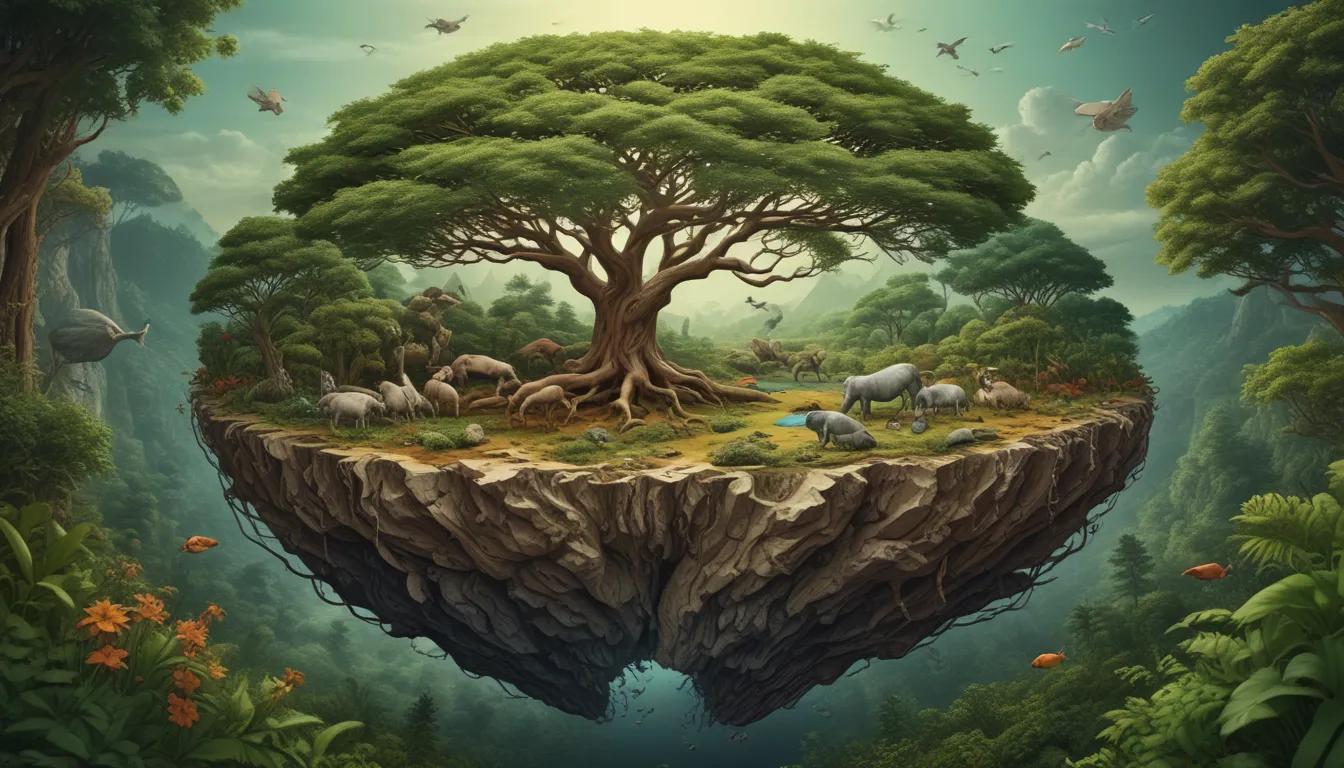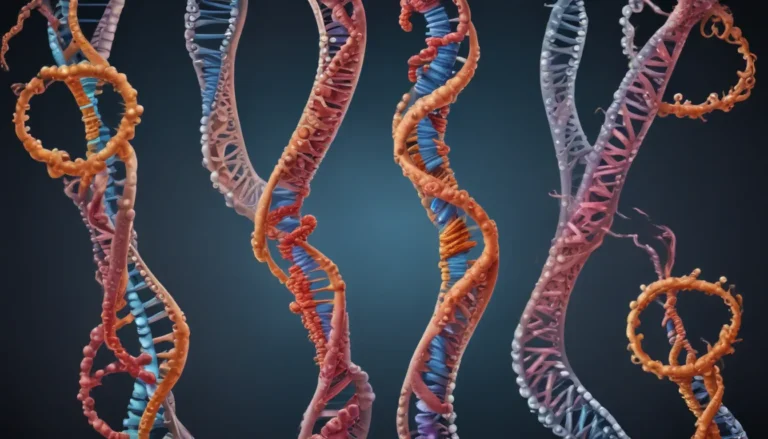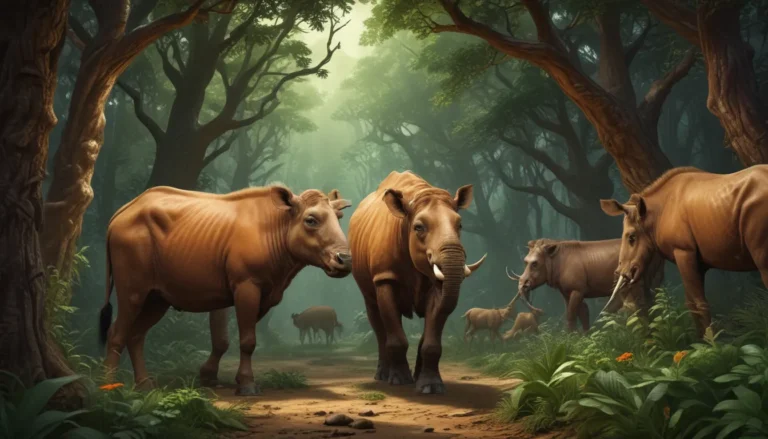A Note About Images: The images used in our articles are for illustration purposes only and may not exactly match the content. They are meant to engage readers, but the text should be relied upon for accurate information.
Have you ever marveled at the interconnectedness of all living beings on Earth? The study of phylogeny unravels the evolutionary history and relationships among organisms, offering valuable insights into the diversity and unity of life. From tracing the origins of species to understanding the complex web of evolutionary connections, phylogeny opens a window into the wonders of the natural world. Whether you’re a biology enthusiast or simply curious about life’s evolutionary tree, delving into the enigmatic facts of phylogeny is sure to leave you astounded.
Understanding Phylogeny: The Study of Evolutionary History
Phylogeny is a captivating field of study that focuses on unraveling the evolutionary relationships between different organisms. By analyzing phylogenetic trees, scientists can trace the origins of species, identify common ancestors, and gain insights into how life on Earth has evolved over millions of years. It’s like constructing a grand family tree that showcases the interconnectedness of all living beings.
Decoding the Puzzle: DNA Sequencing in Phylogenetic Analysis
One of the key tools in phylogenetic analysis is DNA sequencing. By comparing DNA sequences across different species, scientists can identify shared genetic traits and use them to construct accurate phylogenetic trees. This molecular technique plays a crucial role in unraveling the evolutionary history of organisms and understanding their relationships.
Illuminating Biodiversity: The Role of Phylogeny
Mapping out the evolutionary relationships between different species helps us understand the biodiversity and distribution of life on our planet. Phylogeny provides a framework for exploring the interconnectedness of all living organisms and sheds light on the remarkable diversity of life forms that have evolved over time.
Conservation Through Understanding: Phylogeny’s Role in Protecting Species
By understanding phylogenetic relationships, conservationists can identify vulnerable species and develop effective strategies to protect them and their habitats. Phylogeny plays a vital role in conservation efforts by providing insights into the evolutionary uniqueness of species, guiding conservation priorities, and safeguarding biodiversity for future generations.
Uncovering Evolutionary Adaptations: Insights from Phylogenetic History
Studying the phylogenetic history of a species allows scientists to uncover the evolutionary adaptations that have enabled organisms to thrive in their environments. By tracing the evolutionary changes that have occurred over time, researchers gain a deeper understanding of how species have adapted to different ecological niches.
Navigating Complexity: Convergent Evolution in Phylogenetic Analysis
Convergent evolution, where unrelated species independently develop similar traits due to similar environmental pressures, can complicate phylogenetic analysis. The occurrence of convergent evolution challenges scientists to discern true evolutionary relationships and distinguish between shared traits arising from common ancestry and those that have evolved independently.
Mastering the Clock: Insights from Molecular Clocks in Phylogeny
Molecular clocks provide valuable insights into evolutionary timelines by measuring the rate at which DNA sequences change over time. This technique allows scientists to estimate when different species diverged from a common ancestor, providing a glimpse into the deep roots of Earth’s evolutionary history.
Evolving Knowledge: The Dynamic Nature of Phylogenetic Trees
As new research and data become available, phylogenetic trees are constantly refined and updated, leading to a better understanding of evolutionary relationships. The dynamic nature of phylogenetic analysis ensures that our knowledge of the interconnectedness of all living organisms continues to evolve and expand.
Practical Applications: Phylogeny’s Impact Across Fields
From medicine to agriculture, phylogenetic analysis has practical applications that extend beyond the realm of evolutionary biology. Insights from phylogeny contribute to drug development, disease prevention, and crop improvement, highlighting the diverse ways in which the study of evolutionary history impacts various fields.
The Enigma Unveiled: Exploring the Intrigue of Phylogeny
Phylogeny remains an enigmatic field that continues to captivate and inspire scientists around the world. From the complexities of convergent evolution to the dynamic nature of phylogenetic trees, the study of evolutionary relationships is a journey filled with discovery and wonder. By unraveling the mysteries of phylogeny, we gain profound insights into the evolutionary history of life on Earth and our place within the intricate tapestry of the natural world.
Embark on a Journey of Discovery
As you explore the captivating world of phylogeny, remember that each fact uncovered reveals a new layer of complexity and beauty in life’s evolutionary tree. From the ancient split between prokaryotes and eukaryotes to the astonishing diversity of species that inhabit our planet, phylogeny offers a gateway to understanding the interconnectedness of all living beings. Embrace the enigmatic facts of phylogeny and let your curiosity guide you through the intricate web of life’s evolutionary history.
FAQs About Phylogeny
- What is phylogeny?
-
Phylogeny is the study of the evolutionary history and relationships of organisms.
-
How is phylogeny determined?
-
Phylogeny is determined through methods such as comparative anatomy, fossil records, and genetic sequencing.
-
What is the importance of studying phylogeny?
-
Studying phylogeny helps us understand the origins, diversification, and interconnectedness of species, leading to insights into conservation and disease control.
-
How does genetic sequencing contribute to phylogenetic research?
-
Genetic sequencing provides valuable information about the DNA sequences of organisms, allowing scientists to compare and analyze genetic data to establish evolutionary relationships.
-
What is the significance of the tree of life?
-
The tree of life is a visual representation of the evolutionary relationships between species, showcasing their common ancestry and evolutionary history.
-
How does phylogeny impact conservation efforts?
-
Phylogeny helps identify endangered species, understand their evolutionary uniqueness, and prioritize conservation efforts accordingly.
-
Can phylogeny assist in understanding human evolution?
-
Yes, by comparing human DNA with that of other primates and analyzing fossil records, phylogenetic research contributes to our understanding of human evolutionary history.
-
How do scientists use phylogeny to study the origin of diseases?
-
By studying the evolutionary history of pathogens and their hosts, scientists can trace the origins and track the spread of diseases, aiding in disease control and prevention.
-
Can phylogeny be applied to plants as well?
-
Yes, phylogenetic research is also conducted to understand the evolutionary relationships and diversification of plant species.
-
How has phylogeny evolved as a field of study?
- With advancements in technology and the discovery of new fossil records, phylogeny has evolved to incorporate molecular and genetic techniques, enhancing our understanding of evolutionary history.
Dive Deeper into the Enigmatic World of Phylogeny
Unraveling the mysteries of phylogeny is just the beginning of your journey into life’s evolutionary history. Explore the intricate connections between organisms, delve into the fascinating insights of molecular biology, and discover the astonishing truths hidden within the tree of life. Each discovery holds a piece of the puzzle, waiting to be assembled to reveal the breathtaking tapestry of life’s diverse and interconnected web. Embark on this thrilling adventure and let your curiosity lead you through the captivating world of phylogeny and evolutionary biology.
Explore, Learn, and Trust in Quality Content
Our commitment to delivering trustworthy and engaging content is the cornerstone of our mission. Every fact shared on our platform is contributed by real users like you, ensuring a wealth of diverse insights and information. With dedicated editors meticulously reviewing each submission, we uphold the highest standards of accuracy and reliability. Trust in our commitment to quality and authenticity as you explore, learn, and discover the wonders of phylogeny and the intricate connections that bind all living organisms on Earth.






